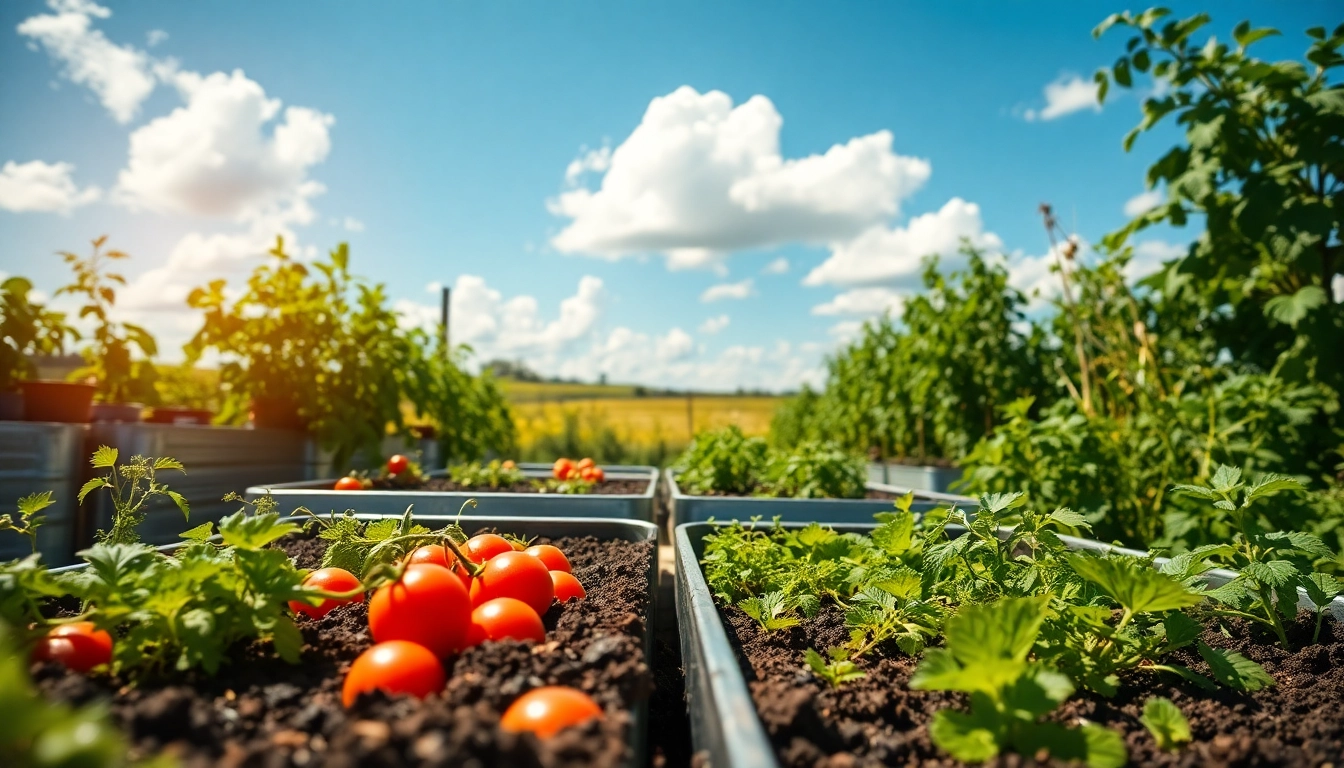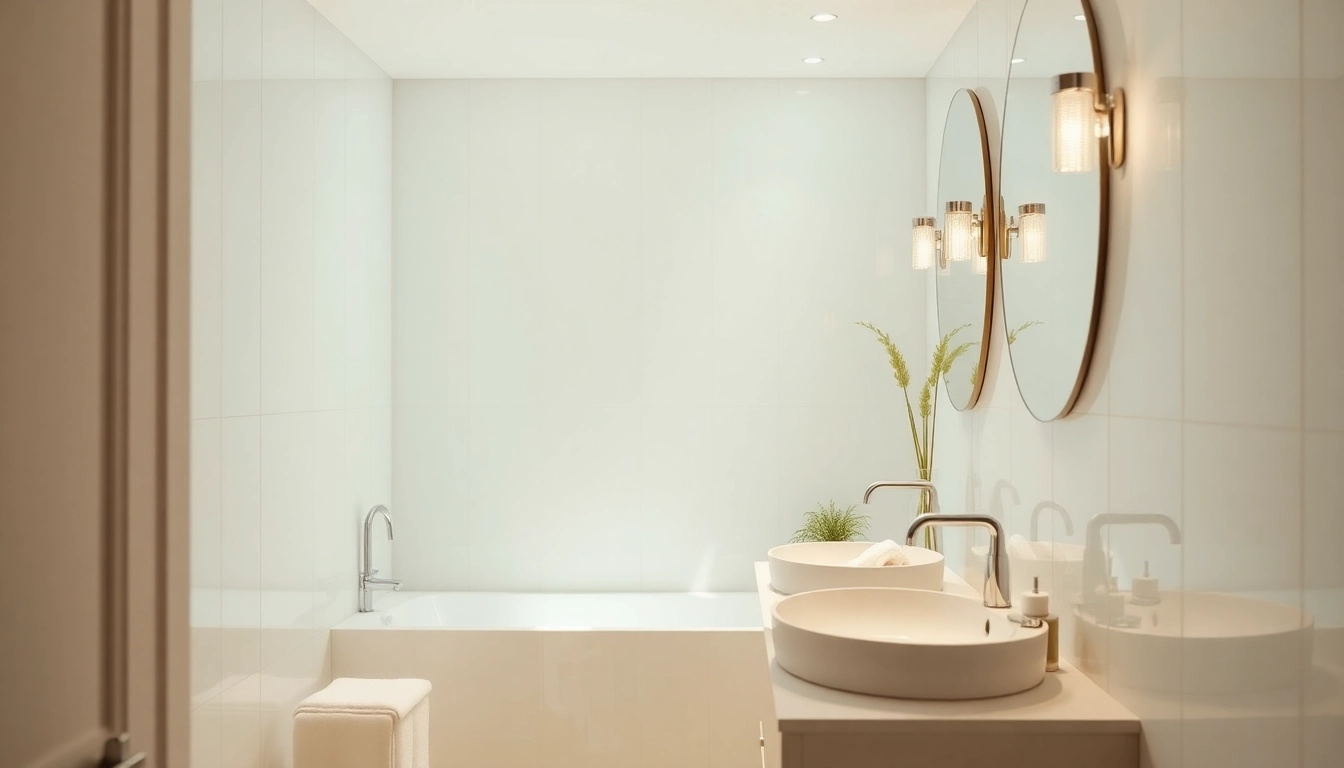Introduction to Galvanized Raised Beds
Gardening enthusiasts are always on the lookout for the best methods to increase their yield and enhance their gardening experience. One solution that has garnered increasing popularity in recent years is the use of galvanized raised beds. These structures offer a seamless combination of durability, aesthetic appeal, and practical benefits that can significantly enhance your gardening efforts.
What Are Galvanized Raised Beds?
Galvanized raised beds are garden containers made from galvanized steel, a type of metal that has been coated with a layer of zinc to enhance its durability and resistance to corrosion. These beds generally come in various shapes and sizes, allowing gardeners to choose the design that best fits their garden layout. Unlike traditional wooden beds, these metal alternatives do not rot or warp over time, leading to longer-lasting gardening solutions.
Benefits of Choosing Galvanized Materials
Choosing galvanized materials for raised beds provides numerous advantages, including:
- Durability: The galvanization process protects the metal from rusting, making it a long-term investment for your garden.
- Easy Maintenance: Unlike wooden beds that may require staining or sealing, galvanized beds need minimal maintenance; simply rinsing them off is usually sufficient.
- Temperature Regulation: The metal can absorb heat during the day and release it at night, helping to maintain a stable growing environment for your plants.
- Aesthetic Appeal: Galvanized beds have a sleek, modern appearance that can enhance your garden’s visual appeal.
- Pest Resistance: Metal does not harbor pests like wood can, reducing infestations and diseases.
Why Use Raised Beds in Your Garden?
The use of raised beds, in general, can provide significant improvements to your gardening experience. Some advantages of raised gardening solutions include:
- Improved Drainage: Raised beds allow for better drainage, crucial for preventing root rot in plants.
- Ergonomics: Working at waist level can reduce back strain, making gardening more enjoyable.
- Soil Quality: You have complete control over the soil composition, allowing for a tailored growing environment for your plants.
- Increased Yield: By optimizing soil quality and bed height, you can potentially increase your crop production.
Designing Your Garden with Galvanized Raised Beds
When you decide to incorporate galvanized raised beds into your gardening strategy, design plays a critical role in their effectiveness. Proper planning will help you optimize space, enhance aesthetics, and ensure plant health.
Ideal Plant Pairings and Layouts
Plant pairing is essential for maximizing space and promoting healthy growth. Here are some ideal combinations:
- Herbs and Vegetables: Pairing herbs like basil and parsley with vegetables such as tomatoes or peppers can improve flavor and deter pests.
- Root Vegetables and Leafy Greens: Carrots can be grown alongside spinach, as they have complementary root depths.
- Flowers and Vegetables: Marigolds not only add beauty but also repel insects that could harm vegetable crops.
In designing your layout, consider plant heights; taller plants should be placed on the north side of the bed to avoid shading shorter varieties.
Dimensions and Depth for Optimal Growth
The depth of your galvanized raised bed is crucial for plant root development. Most plants thrive in beds that are at least 12 to 18 inches deep. This depth allows for sufficient soil volume to retain moisture and nutrients while encouraging healthy root growth. For deep-rooted plants like tomatoes or carrots, consider increasing bed depth up to 24 inches.
Creating Aesthetic Appeal with Design
Beyond functionality, galvanized raised beds can add visual interest to your garden. Consider mixing various bed shapes and sizes to create an inviting atmosphere. Adding a gravel path between the beds can enhance accessibility while visually separating distinct garden segments. Moreover, incorporating vertical elements like trellises can help add height and texture to your planting areas, making the garden more visually dynamic.
Building and Maintaining Galvanized Raised Beds
Creating your own galvanized raised beds can be a rewarding DIY project. It not only provides personalized gardening solutions but also enhances your understanding of your growing environment.
Step-by-Step Construction Guide
- Gather Materials: You’ll need galvanized sheets, corner connectors, screws, and tools such as a drill and saw.
- Determine Dimensions: Decide the size of your raised bed based on available space and desired plant types.
- Prepare the Site: Clear the area of vegetation and debris to create a stable foundation.
- Assemble the Frame: Using screws and corner connectors, secure the galvanized sheets into a rectangular or square frame.
- Add Base Layer: Place a layer of landscape fabric at the bottom to prevent weeds from infiltrating the soil.
- Fill with Soil: Add a soil mix appropriate for the plants you wish to cultivate.
Maintenance Tips for Longevity
To ensure the longevity of your galvanized raised beds, consider the following tips:
- Inspect for Rust: Regularly check for signs of rust and treat any affected areas immediately to prevent further damage.
- Adjust Soil Levels: Over time, soil can settle. Be prepared to add fresh soil to maintain optimal growing conditions.
- Seasonal Cleaning: At the end of each growing season, clear out dead plants and debris to prevent disease.
Soil Selection and Planting Techniques
The success of your plants largely depends on the soil you choose. An ideal soil mix for raised beds typically includes a combination of compost, peat moss, and perlite or vermiculite to enhance drainage and aeration. When planting, be mindful of spacing to allow air circulation, reducing the risk of fungal diseases. Additionally, consider rotating crops each season; this practice prevents soil nutrient depletion and interrupts pest and disease cycles.
Environmental Impact of Galvanized Raised Beds
Adopting environmentally friendly practices is essential for sustainable gardening. Recognizing the environmental implications of your gardening choices can further enhance your gardening experience.
Eco-Friendly Gardening Practices
Using galvanized raised beds contributes to eco-friendly gardening by promoting sustainable practices. Opt for organic fertilizers and pest control methods to minimize chemical runoff into the surrounding environment. Additionally, use rainwater collection systems to provide a sustainable irrigation solution, reducing reliance on tap water.
Improving Drainage and Soil Quality
Raised beds naturally allow for superior drainage compared to traditional gardens, preventing oversaturation and promoting healthier root systems. The ability to select and amend soil further enhances soil quality, leading to more nutrient-rich outcomes. This is especially beneficial in regions where soil quality may be poor or contaminated.
Reduce Pest Problems with Elevated Beds
The elevation of raised beds offers an advantage in pest control. Many common garden pests, such as slugs and snails, have a harder time reaching elevated structures. Furthermore, by monitoring your plants more closely due to the accessibility of raised beds, you can swiftly identify any infestations or diseases that may arise.
Maximizing the Use of Galvanized Raised Beds
Once you’ve established your galvanized raised beds, the next step is to maximize their use to ensure a fruitful gardening experience.
Seasonal Rotation and Crop Planning
Implementing a crop rotation plan is essential for maintaining healthy soil and optimizing yields. Each plant family has different nutrient requirements; by rotating crops, you can ensure that nutrient levels remain balanced. Plan your rotations ahead of time, taking care to include cover crops during off-seasons to enrich the soil.
Vertical Gardening Techniques with Raised Beds
Utilizing vertical gardening techniques can help maximize space, especially in smaller gardens. Consider growing climbing plants such as peas or cucumbers along trellises or planting cascading flowers that can spill over the edges of your raised beds. Vertical setups not only save space but also improve air circulation, lowering the risk of disease.
Using Companion Planting for Healthy Growth
Companion planting is another powerful technique that involves planting different crops in close proximity to enhance growth. For example, planting onions with carrots can help deter pests while benefiting both plants’ growth. Resources are readily available to guide you in the most effective pairings, enabling you to maximize the benefits of your galvanized raised beds.

